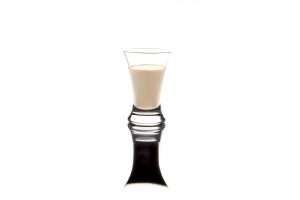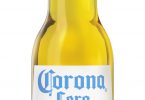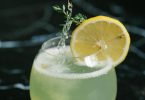Bord Bia’s ambitious strategy for Irish Spirits

Focus on glasses of whisky or bourbon with ice-cubes. Glassful of delicious beverages on wooden table. Celebration and relax concept. Blurred background
This aim forms part of its Spirits Marketing Review and Strategy Development 2020-2022.
The spirits sector has experienced unprecedented growth over the last five years with exports more than doubling in value to over €1 billion in 2018.
That growth has largely been driven by Irish whiskey which enjoyed exports of €727 million in 2019.
Last year Bord Bia undertook a prioritisation analysis to identify key current and future priority markets for the spirits sector at category-specific level. This analysis fed into the range of services and resources Bord Bia has now committed to the sector through its Spirits Marketing Strategy 2020-2022.
Irish spirits – the major markets
The US remains Irish whiskey’s most important export market, followed by the UK, Canada, Germany and France.
Apart from whiskey, Irish cream liqueur exports have grown by 19% in value over the past four years to €342 million in 2018 while we exported more than €5 million-worth of Irish gin in 2018, with double-digit growth recorded in the UK.
Trends and opportunities in the global spirits industry
Global commercial intelligence provider MarketLine predicts that the global value of spirits will increase by some 20% to $808.4 billion between 2017 and 2022.
Bord Bia intends to focus on some of the key trends in this market which include stay-at-home mixology, a newly-emerging ‘sub-trend’ where North America currently leads the way.
Ethical consumption too has come to the fore with NoLo cocktails set to become more prevalent as will vegan, low calorie or low carb options.
Sustainability has a part to play in all this with a recent consumer poll by Diageo finding nearly half of customers willing to pay a 10% premium for socially-responsible and environmentally-friendly goods. Herein lies an “opportunity for the Irish spirits industry to position itself in a powerful leadership role as sustainability grows in importance in the industry”.
The rise of social media has led to online media becoming the principle domain for alcohol advertising and promotion internationally.
“Consumers are more inclined to distribute consumer experience content online when the relevant product is a premium brand as this is seen to confer status and prestige on the consumer,” states the report.
The opportunity for Irish producers therefore lies in progressive marketing and innovation.
There’s been a significant decline in global stocks of aged inventory, points out the report, adding, “The development of new styles of whiskey, where age statements are less important, has come partly in response to this”.
The report also emphasises that Irish whiskey producers are world leaders in adding value through grain blending and maturation with different woods.
Other trends of note include the move to ‘Less is better’ and toward healthier drinking.
The value proposition and market opportunities
Sales of premium and super premium Irish whiskeys have grown far more rapidly than for the category as a whole. But Bord Bia warns that, “Beyond Europe and North America awareness of Ireland and the Irish whiskey category is generally low. Building awareness of the rich heritage and tradition of the Irish whiskey category in emerging markets such as East Asia and Latin America will be key to unlocking future growth opportunities. Irish cream liqueur is also taking advantage of the global premiumisation trend”.
Tourism
Tourism too has a part to play in all this such that by the end of last year over 20 whiskey distillery Visitor Centres were anticipated in Ireland.
“These collectively represent the fastest-growing tourist attraction in Ireland with visitor numbers expected to surpass one million for the first time in 2019.”
Prioritising markets
RoI’s Irish whiskey exports have grown from €130 million in 2007 to €654m in 2018.
The share of spirits exports accounted for by the whiskey category has grown from just 18.5% in 2007 to 64.8% in 2018.
“Together, Irish whiskey and Irish cream liqueur account for over 98% of all Irish spirits exports,” notes the report which predicts that the lion’s share of future growth is still likely to be achieved in established markets and – particularly in the case of whiskey – in the US.
The report provides a brief on the key markets for Irish spirits exports.

Irish cream liqueur exports have grown by 19% in value over the past four years to €342 million in 2018.
Key markets
US
Imports of Irish whiskey to the US grew from €37 million in 2007 to €384m in 2018.
“The US imports approximately 40% of all spirits consumed domestically,” states Bord Bia, “The super-premium and high-end premium spirits segments have significantly outpaced the premium and value segments of the market in recent years.
“Irish brands command a 6% share of the total US whiskey market, with Ireland exporting €168.5m-worth of cream liqueur to the US in 2018, up from €139m five years ago.”
Canada
Ireland exported €16.9 million-worth of whiskey to Canada in 2018 which accounts for 5.9% of all spirits exports from Ireland by value. Canada is also the third most important international market for Irish cream liqueur representing 8.6% of all Irish cream liqueur consumed internationally or €42m-worth in Canada’s case.
The Canadian market is dominated by off-trade consumption.
France
According to the report, “France is the largest single market in the world for Scotch, which holds 87.7% of the market in volume terms. Ireland is the third-largest supplier of whiskey, with 2.5% of the market.”
Russia
Russia is the world’s second-largest overall spirits market and by far the world’s largest market for vodka.
A gradual switch from vodka to brown spirits has become a notable trend in the Russian market, points out the report, adding that there’s an enormous black market in spirits which may account for up to 50% of the total Russian market.
“Irish whisky exporters currently hold a 9.4% share of the Russian whiskey market,” states the report.
UK
Although Scotch holds 70.5% of the whisky market there, it has been in steady decline for several years, states Bord Bia, “The share of the UK market held by Irish whiskey has been on a steady rise and now stands at 4.5%.”
Australia
Irish whiskey accounts for 4.6% of the Australian whisk(e)y market.
South Africa
South Africa is the sixth most important market for Irish whiskey and Irish whiskey’s share there has risen from 5.6% in 2013 to 8.6% in 2017.
South Africa is the sixth-largest gin market in the world by volume and the 10th-largest market globally by value.
Japan
With estimated annual sales of over €12 billion, the Japanese spirits market is one of the most valuable in the world according to the report which warns that, “Local producers hold over 80% of Japan’s €10.1 billion whiskey trade and Japan is the third largest whisky market in the world.”
Brazil
The report states that Brazil is one of the most important spirits markets in the world, one where Scotch holds 78% of the market by volume and the share currently held by Irish whiskey seems inordinately small at 0.4%.
Poland
Two retailers together account for as much as 40% of total whiskey volumes in Poland.
Raising profile in established and emerging markets
In order to raise the profile of Irish spirits in established and emerging markets Bord Bia has devised a three-year communications campaign to communicate the Irish spirits value proposition which will emphasise the characteristics of craftsmanship, distinction, quality and tradition.
Going forward, Bord Bia intends to invest in consumer insight research that supports growth in future opportunity markets.
“We will target consumer insight on the usage occasions and attitudes to spirits and Irish spirits in one future market per year over the three years of the strategy,” it promises.








